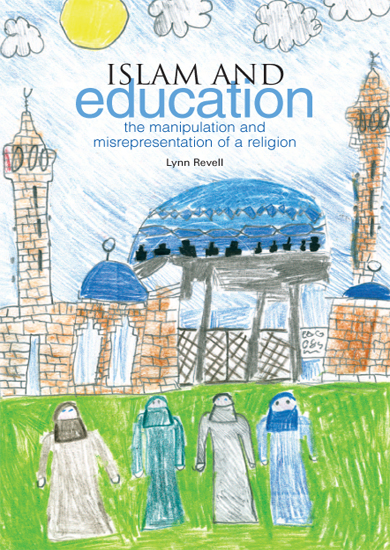Juan had originally written this book review while volunteering at The Runnymede Trust’ in London during the Summer of 2012 (the review was published on Runnymede’s quaterly bulleting in 2013 for its issue on Young People – Runnymede Bulletin, Spring 2013, Issue 373, page 24). Juan also published an earlier version of the article on 24 November 2012 on his blog IdeasdePapel

Islam and Education: the manipulation and misrepresentation of a religion by Dr Lynn Revell is an essential reading and much needed review of how Islam is taught and represented through the current Religious Education (RE) curriculum in Great Britain.
Islam has had an increasing presence in British and European public life through media and political narratives and events, especially in the last ten years after the 9/11 and 7/7 terrorist attacks. In this context, it is important to reflect on how current practices and strategies of RE engage with and represent the realities of Islam in a global context and UK Muslims communities.
Through a comprehensive and thoroughly researched analysis, Dr Revell explores the rationale and frameworks behind the teaching of religion in UK as well as the nature of the materials and resources available for teachers and education professionals.
Dr Revell explains that one of the main problems is that approaches to teaching religion, as well as related policies, are still embedded in an out-dated framework: the cannon of world religions. The latter approaches and classifies religions through fixed typologies and understands them through the ‘prism’ of a Christian model of religion and western liberal values.
Revell argues that it is this cannon that has placed Islam and Muslim communities at odds with common ‘British’ values and thus led to their misrepresentation in education. Furthermore, the author argues in chapters 1 and 2 thatthe development of the cannon of world religions, the inclusion of Islam in the RE curriculum and the emergence of multiculturalist practices to education in the 60s and 70s were not the product of a proactive approach or equitable considerations. Instead, the issue at stake was, first, how to reconcile the powerful and dynamic force of Islam with the desire to place European identity at the centre of modern civilization, and second, how to put up with the pressures of an increasing secularist as well as racially and ethnically diverse British population.
Revell’s exhaustive analysis in chapter 3 of over 60 textbooks published between 1968 and 2011 sheds important light on the challenges of RE to represent Islam through a ‘liberal prism’ in a context where Islam is popularly associated with antidemocratic values, oppression, insecurity and violence. RE’s main problem, Revell argues, is that by seeking to portray a positive image of Islam, “textbooks leave out those practices and interpretations that do not fit the image of religion they want to present” (p.55). By omitting issues such as the relationship of women and Islam, forced marriage, race and discrimination or religious extremism, RE textbooks offer a more acceptable version to liberal Western sentiments.
Likewise, most education policies and initiatives from current and previous UK governments dealing with Islam tend to represent Islam solely as a religion rather than as a culture, a civilisation and source of identity with wider social, political and economic implications. The result is a ‘sanitised’ version of Islam which does not and cannot challenge Islamophobia, discrimination or clarify misconceptions. This creates in turn a dual discourse of religion between what is taught at school and what it is said, commented or assumed in politics, the media and the wider international arena.
In her last chapter, Revell analyses the notion and role of tolerance in RE as a negotiator and ‘regulator of difference’ and its potentiality to alienate. She closes the book highlighting some best practices and recommendations for teachers and educationalists such as field trips to mosques, interactive activities, the use of mixed materials for teaching and further involvement of Muslims in local bodies that inform RE curriculum. Revell insists, however, that none of these strategies are to succeed in representing Islam truthfully before a critical and reflexive approach to RE is adopted, taking into account the relationships between the subject and its environment.
One of the strengths of the book is that Revell succeeds in offering a concise and clear picture of current RE practices, grounded in sound research and critical approach. Each chapter starts with experiences from the classroom or relevant news clippings, which helps to draw the reader in and contextualise her arguments. However, as a book for practitioners, it would have benefited from being less academic at times. The book could have also benefited from individual sections in each chapter, as it is the case in chapter 5, identifying possible solutions and recommendations to the problems addressed. I would recommend reading this book, for teachers as well as anyone interested in current approaches to religious education and their wider social implications.
*This book review was originally prepared for Runnymede Trust’s quarterly bulletin during the Summer of 2012 and it was published in its Spring 2013 issue on Young People (Runnymede Bulletin, Spring 2013, Issue 373, page 24). I really wanted spread the word about this book which is really interesting, so I decided to post the review here before it got edited and published in the bulletin. Dr Lynn Revell is senior lecturer at Canterbury Christ Church University.
COMMENTS
I’ll wait for the translation
Lucia Ruben (4 December 2012)
